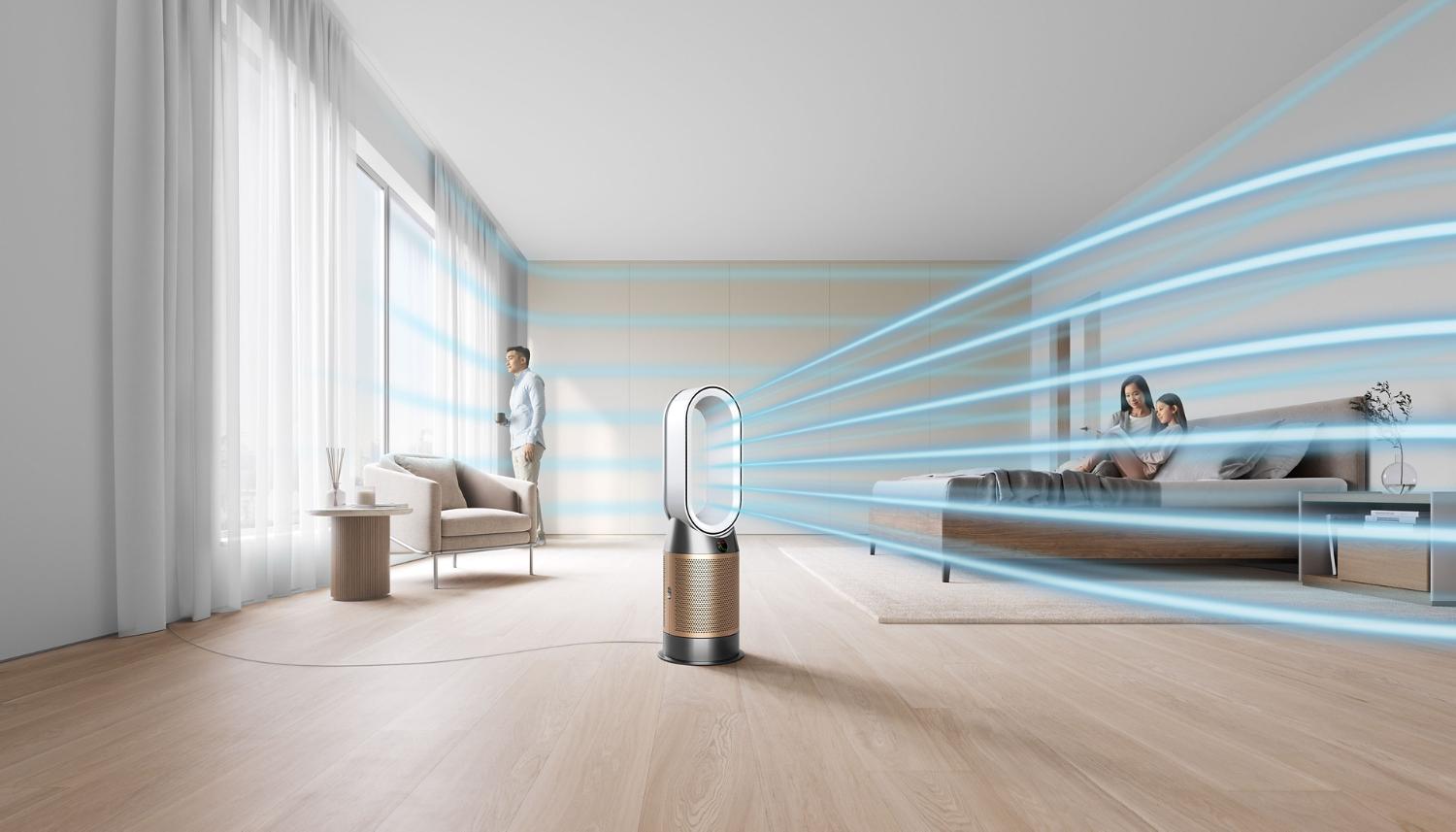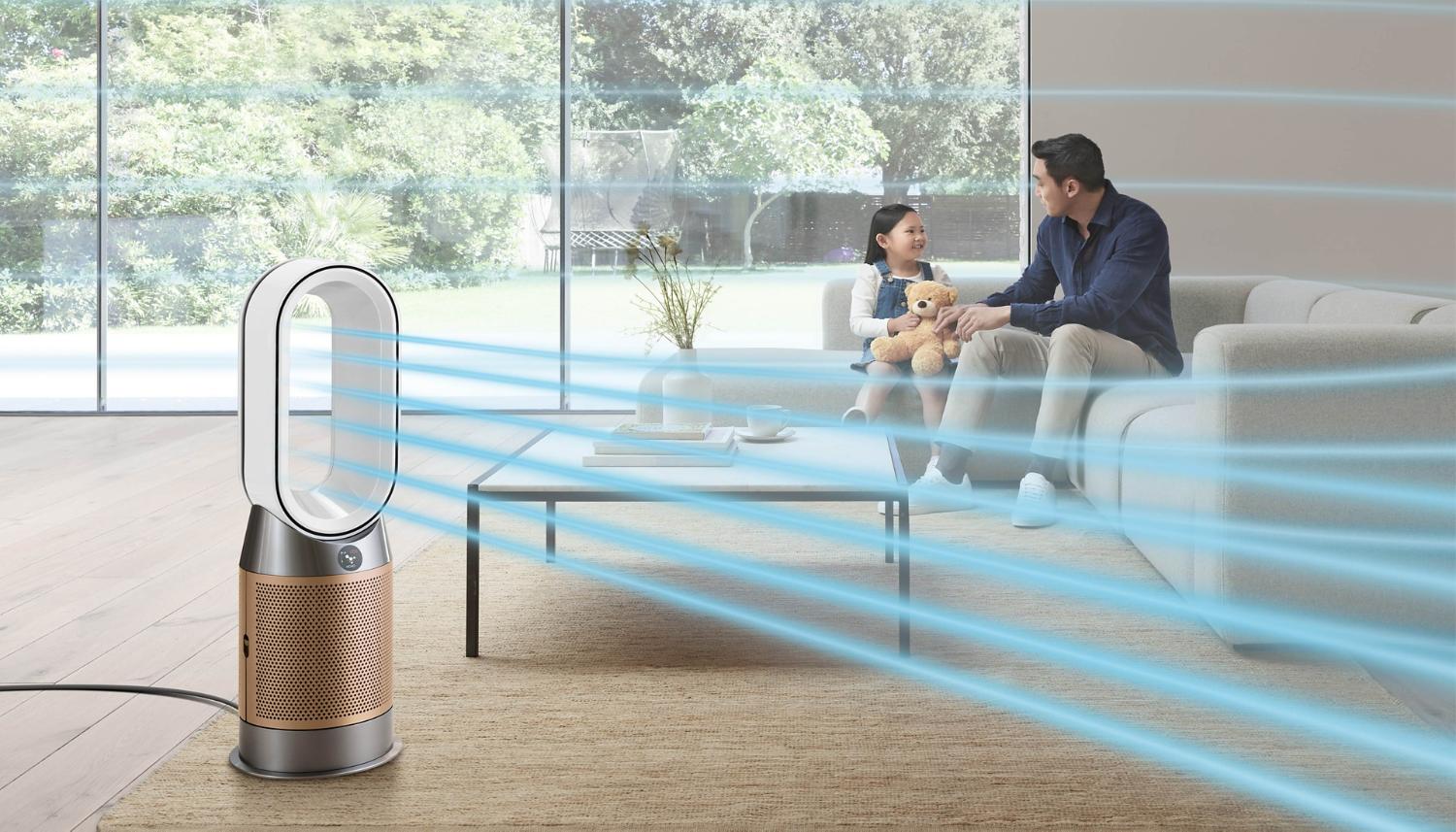Insights | Air Quality | Indoor
How to improve indoor air quality
While it’s well known that outdoor air pollution is a global problem, the quality of the air in our homes often gets overlooked.
However, many of the things we do to make our indoor environments more comfortable can increase our exposure to potentially harmful pollutants.
Dyson’s global air quality study found that homes in all countries studied exceed the WHO annual guideline for PM2.5¹ – the invisible fine particles less than 2.5 micrometers in diameter.
Read on to discover proactive steps you can take to improve your existing indoor air quality and help reduce pollution in your home.
Indoor air pollutants include but are not limited to:
• pollen, pet dander and other common allergens*
• dust (which can be composed of skin cells among other things)
• NO₂
• cleaning chemicals
• air freshening products
• radon
• formaldehyde
10 ways to improve indoor air quality
Stop pollutants at the door
One of the best ways to control your indoor air quality is to keep pollutants out.
Properly sealing doors and windows can help prevent microscopic particles like allergens from infiltrating your living space without you knowing.
As dirt and allergens* can hitch-hike on your clothing and shoes, simply having a doormat and wiping your feet before entering your home can make a difference.
Open your windows
This may sound counter-intuitive while also recommending that your home be properly sealed, but allowing fresh air to flow throughout your home after activities like cooking and showering can help remove some types of pollutants.
If you live in a highly polluted area, check the air pollution levels before opening windows. Alternatively, use an air purifier to circulate clean air in your home.
Use chemical-free cleaning and self care products
Candles, air sprays, and incense may smell wonderful, but they can release volatile pollutants into the air.
The same is true for cleaning and self care products, which can be loaded with potentially harmful chemicals and fragrances.
Read labels to check for artificially scented products or look for natural alternatives whenever possible.
Remove dust
One of the few easily visible signs of indoor air pollution is the dust that accumulates throughout your home.
Dust is typically a collection of skin cells, hair, pet dander, pollen, smoke, dirt and pollution. It can be disturbed by everyday activities like simply walking around your home, so removing dust as completely and often as possible is ideal.
Dyson’s HEPA air purifiers monitor your indoor air quality and capture 99.95% of microscopic particles as small as 0.1 microns² for a healthier home environment.
Vacuum regularly
To help remove visible dust and potentially hidden allergens* and irritants it's important to vacuum regularly.
Use a vacuum that can drive bristles deep into carpets to remove ground-in dirt. A good selection of vacuum tools can also help to gently remove accumulated dust from hard-to-reach places like above furniture, on ceiling fan blades and along window trim.
Dyson vacuum cleaners feature whole-machine filtration. They expel cleaner air and come with an array of attachments to help make cleaning more efficient.
Don’t forget bedding and upholstery
Beds, sofas, drapes and other upholstered furniture can all accumulate dust. These common household items collect a staggering amount of shed human skin.
We recommend regularly washing bedding and curtains and using the Dyson Mattress tool to deep clean mattresses and cushions.
Purify your air
Most indoor pollutants hiding in your home can’t be seen or smelled.
Dyson air purifiers capture 99.75% of pollutants as small as 0.3 microns² and constantly monitor your indoor air quality. They automatically sense airborne particles and then display real-time reports on the LCD screen.
In our latest air purifiers, it’s not just the filter that’s sealed to HEPA H13 standard – it’s the whole machine. This prevents pollutants from being expelled back into the room after they’ve been removed.
We test our machines beyond industry standards, so they’re suitable for real homes. Only Dyson air purifiers are engineered with Air Multiplier™ technology, to draw in distant pollutants and project purified air into every corner of the room.
Our most powerful purifier, Dyson Purifier Big+Quiet Formaldehyde BP04, uses cone aerodynamics to deliver powerful, long-range projection up to 32ft³* – to purify large spaces evenly and quietly.
Switch on your cooker hood and extractor fan
Cooking produces smoke, steam, odours and grease. But using your cooker hood and fans during and after meals can help clear the air of these contaminants.
Kitchen ventilation extracts carbon monoxide (CO), nitrogen dioxide (NO₂), and volatile organic compounds (VOCs). It also helps to control humidity levels in the kitchen.
An extracting cooker hood exhausts air outside, while a recirculating hood passes it through a particle filter and resupplies it into the kitchen.
Control indoor humidity and temperature
Temperature and humidity alone may not introduce new pollutants and allergens*, but certain conditions can help existing allergens* and pollutants multiply.
By controlling temperature using your thermostat and humidity with a humidifier like the Dyson Purifier Humidify + Cool™ PH2 De-NOx, you can help create conditions that are less ideal for some pollutants to thrive.
Understanding the different sources of indoor air pollution is the first step towards developing a cleaner, healthier home. Implementing the changes necessary to improve indoor air quality may seem daunting, but often simple strategies like those listed above can have a positive effect.
Read more
-
-
Insights | Air quality | Air purifiers
What's the difference between an air purifier and a humidifier?
-
Discover Dyson
¹PM2.5 levels collected from Dyson connected purifiers have been compared to WHO 2021 guidelines for annual and daily PM2.5 exposure, which can be found here: www.who.int/news-room/feature-stories/detail/what-are-the-who-air-quality-guidelines
*Allergens refers to non-living material.
³Testing for PM2.5 purification completed in a large testing chamber following relevant Dyson testing methods. Results may vary in practice.
Disclaimer
The information provided in this article is not intended as a product claim. Refer to individual Dyson models for specific capture claims.
The contents of dyson.com, such as text, graphics, images, and other materials created by Dyson or obtained from Dyson licensors, and other materials contained on the Dyson.com Site (collectively, "Content") are for informational purposes only. The Content is not intended to be a substitute for professional medical advice, diagnosis, or treatment. Always seek the advice of your physician or other qualified health provider with any questions you may have regarding a medical condition. Never disregard professional medical advice or delay in seeking it because of something you read on the Dyson.com Site!
Dyson does not recommend or endorse any specific tests, physicians, products, procedures, opinions, or other information that may be mentioned on the Site. Reliance on any information provided by Dyson, Dyson employees, others appearing on the Site at the invitation of Dyson, or other visitors to the Site is solely at your own risk.



